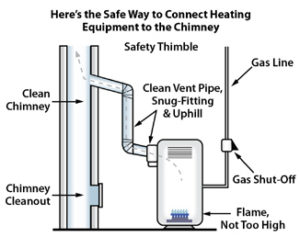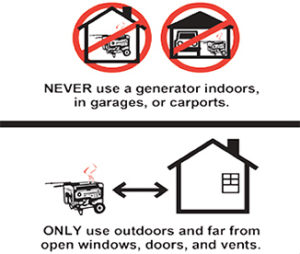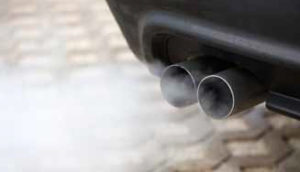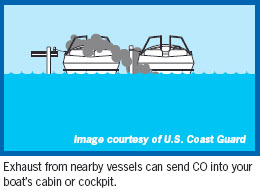Things to remember
- Fire is FAST!
- Fire is HOT!
- Fire is DARK!
- Fire is DEADLY!
PREPARE NOW
- Create and practice a fire escape plan
- Check smoke alarms
- Make digital copies of valuable documents and records like birth certificates
- Sleep with your bedroom door closed
- Keep a fire extinguisher in your kitchen
- Consider installing an automatic fire sprinkler system in your residence
stay safe during
- Crawl low under any smoke to your exit. Heavy smoke and poisonous gases collect first along the ceiling
- Before opening a door, feel the doorknob and door. If either is hot, or if there is smoke, leave the door closed and use your second way out
- If you open a door, open it slowly. Be ready to shut it quickly if heavy smoke or fire is present
- If you can’t get to someone needing assistance, leave the home and call 9-1-1 or the fire department
- If pets are trapped inside your home, tell firefighters right away
- If you can’t get out, close the door and cover vents or cracks around doors with cloth or tape to keep smoke out. Signal for help at the window with a light-colored cloth or flashlight
- If your clothes are on fire, stop, drop and roll.
STOP, DROP AND ROLL
- STOP: stop immediately
- DROP: drop to the ground
- ROLL: roll over and over or back and forth until the fire is out.
If you or someone else cannot stop, drop and roll, smother the flames with a blanket or towel.
for older adults and people with access or functional needs
- If you use a walker or wheelchair, check all exits to be sure you can get through doorways
- Make any necessary accommodations – such as providing exit ramps and widening doorways – to facilitate an emergency escape
- Speak to your family members, building manager or neighbors about your fire safety plan and practice it with them
- Contact your local fire department’s non-emergency line and explain your special needs. Ask emergency providers to keep your special needs information on file
- Keep a phone near your bed and be ready to call 911 if a fire occurs
fire prevention
Cooking
- Stay in the kitchen when you are frying, grilling or broiling food. If you leave the kitchen, even for a short period of time, turn off the stove
- Wear short, close-fitting, or tightly rolled sleeves when cooking
- Position barbecue grills at least 10 feet away from siding and deck railings and out from under eaves and overhanging branches
- Keep a fire extinguisher available
Electrical and Appliance Safety
- Frayed wires can cause fires. Replace all worn, old or damaged appliance cords immediately and do not run cords under rugs or furniture
- If an appliance has a three-prong plug, use it only in a three-slot outlet. Never force it to fit into a two-slot outlet or extension cord
- Immediately shut off, then professionally replace, light switches that are hot to the touch and lights that flicker
Portable Space Heaters
- Keep combustible objects at least three feet away from portable heating devices
- Buy only heaters evaluated by a nationally recognized laboratory, such as Underwriters Laboratories (UL)
- Check to make sure the portable heater has a thermostat control mechanism and will switch off automatically if the heater falls over
- Only use crystal clear K-1 kerosene in kerosene heaters. Never overfill it. Use the heater in a well-ventilated room
Fireplaces and Woodstoves
- Inspect and clean woodstove pipes and chimneys annually and check monthly for damage or obstructions
- Use a fireplace screen heavy enough to stop rolling logs and big enough to cover the entire opening of the fireplace to catch flying sparks
- Make sure the fire is completely out before leaving the house or going to bed
Children
- Take the mystery out of fire play by teaching children that fire is a tool, not a toy
- Store matches and lighters out of children’s reach and sight, preferably in a locked cabinet
- Never leave children unattended near operating stoves or burning candles, even for a short time
Other
- Never use a stove range or oven to heat your home
- Keep combustible and flammable liquids away from heat sources
- Portable generators should NEVER be used indoors and should only be refueled outdoors and in well-ventilated areas
carbon monoxide posioning
Carbon monoxide, or “CO,” is an odorless, colorless gas that can kill you.
where is it found?
- CO is found in fumes produced any time you burn fuel in cars or trucks, small engines, stoves, lanterns, grills, fireplaces, gas ranges, or furnaces. CO can build up indoors and poison people and animals who breathe it.
what are the symptoms?
The most common symptoms of CO poisoning are headache, dizziness, weakness, upset stomach, vomiting, chest pain, and confusion. CO symptoms are often described as “flu-like.” If you breathe in a lot of CO it can make you pass out or kill you. People who are sleeping or drunk can die from CO poisoning before they have symptoms.

 how can i prevent co poisioning in my home?
how can i prevent co poisioning in my home?
- Install a battery-operated or battery back-up CO detector in your home and check or replace the battery when you change the time on your clocks each spring and fall. Place your detector where it will wake you up if it alarms, such as outside your bedroom. Consider buying a detector with a digital readout. This detector can tell you the highest level of CO concentration in your home in addition to alarming. Replace your CO detector every five years
- Have your heating system, water heater, and any other gas, oil, or coal burning appliances serviced by a qualified technician every year
- Do not use portable flameless chemical heaters indoors
- If you smell an odor from your gas refrigerator have an expert service it. An odor from your gas refrigerator can mean it could be leaking CO
- When you buy gas equipment, buy only equipment carrying the seal of a national testing agency, such as Underwriters’ Laboratories
- Make sure your gas appliances are vented properly. Horizontal vent pipes for appliances, such as a water heater, should go up slightly as they go toward outdoors, as shown below. This prevents CO from leaking if the joints or pipes aren’t fitted tightly
- Have your chimney checked or cleaned every year. Chimneys can be blocked by debris. This can cause CO to build up inside your home or cabin
- Never patch a vent pipe with tape, gum, or something else. This kind of patch can make CO build up in your home, cabin, or camper
- Never use a gas range or oven for heating. Using a gas range or oven for heating can cause a build up of CO inside your home, cabin, or camper
- Never burn charcoal indoors. Burning charcoal – red, gray, black, or white – gives off CO
- Never use a portable gas camp stove indoors. Using a gas camp stove indoors can cause CO to build up inside your home, cabin, or camper
- Never use a generator inside your home, basement, or garage or less than 20 feet from any window, door, or vent
- When using a generator, use a battery-powered or battery backup CO detector in your home
how can i prevent co poisioning in my car/truck?

- Have a mechanic check the exhaust system of your car or truck every year. A small leak in the exhaust system can lead to a build up of CO inside the car
- Never run your car or truck inside a garage that is attached to a house even with the garage door open. Always open the door to a detached garage to let in fresh air when you run a car or truck inside
- If you drive a car or SUV with a tailgate, when you open the tailgate open the vents or windows to make sure air is moving through. If only the tailgate is open CO from the exhaust will be pulled into the car or SUV
how can i prevent co posioning on my boat?

- Properly install and maintain all fuel-burning engines and appliances
- Educate all passengers about the signs and symptoms of CO poisoning
- Swim and play away from areas where engines vent their exhaust
- Watch children closely when they play on rear swim decks or water platforms
- Never block exhaust outlets. Blocking outlets can cause CO to build up in the cabin and cockpit areas–even when hatches, windows, portholes, and doors are closed
- Dock, beach, or anchor at least 20 feet away from the nearest boat that is running a generator or engine. Exhaust from a nearby vessel can send CO into the cabin and cockpit of a boat
If you think a person on your boat has CO poisoning move him or her to fresh air right away and contact the nearest emergency services.
for more information
- U.S. Fire Administration (USFA)
- American Red Cross
- CDC
- U.S. Coast Guard
- U.S. Consumer Products Safety Commission
- U.S. Environmental Protection Agency
- Protect yourself from Carbon Monoxide
